The second edition of Unbox Extra: The Gokongwei Group Innovation Festival underlined the importance of building a customer-centric culture at any business, especially after the massive disruption brought into everyone’s lives by the COVID-19 pandemic.
At the end of the illuminating, session-packed, one-day festival attended by over 4,000 Gokongwei Group employees, Lisa Gokongwei-Cheng, Senior Vice President of Digital Transformation and Corporate Services at JG Summit Holdings, summarized the key takeaways from the event.
1. COVID Has Changed Customer Behaviors Permanently and the Market Is Still Changing.
This was a topic covered in depth by Julian Cua and Anthony Oundjian from Boston Consulting Group. According to their research, post-COVID Filipinos are different in five major ways: They are finally shopping online; they are rapidly adopting digital payments and financial services; they are ‘cocooning’ at home, meaning more time for both work and play; they are more health-conscious; and some are part of the roller-coaster ride in the crypto-currency world. These behavioral changes provide great opportunities for companies to reach and serve more customers.
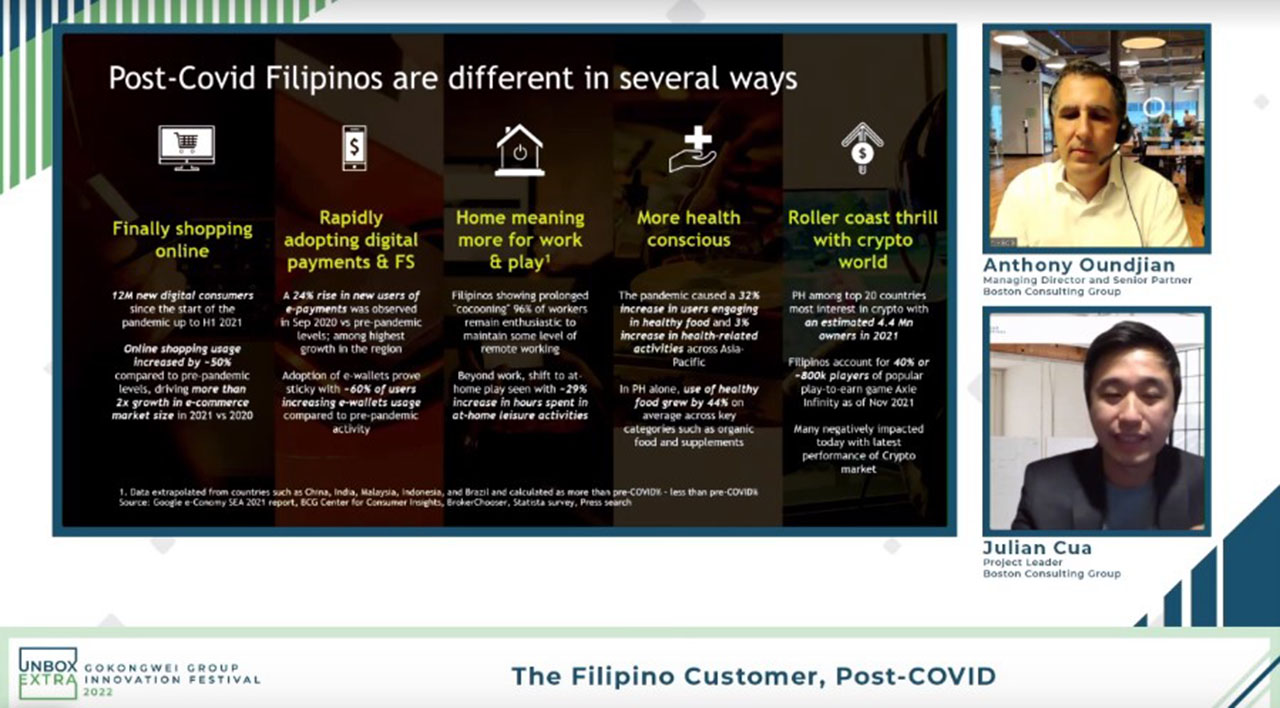
The growing adoption of digital services also hinted to the potential of the metaverse as a new platform to reach consumers. In his talk, Matthew Cost, Executive Director of Equity Research at Morgan Stanley, spoke of the applications of the metaverse that go beyond gaming and entertainment. According to Cost, retail and education are among the industries that have unlimited potential in the metaverse.
2. Great Businesses Can Be Built by Solving Customer Pain Points.
At Unbox Extra, Pair Eyewear co-founders Sophia Edelstein and Nathan Kondamuri, Carsome founder Eric Cheng, and Peddlr Philippines Founder and CEO Nel Laygo all talked about how their respective companies used both available technology and innovative thinking to address customer pain points.
Pair Eyewear set out to reinvent the eyewear industry, a legacy type of business, into a retention-driven one. Its founders successfully accomplished this reinvention by understanding customer frustrations, using technology, and challenging the traditional business model wherein the average customer bought eyewear only once every three years. Pair Eyewear is now a well-loved US brand for its affordable eyeglass frames that could be easily modified or accessorized to suit the wearer’s need or mood.
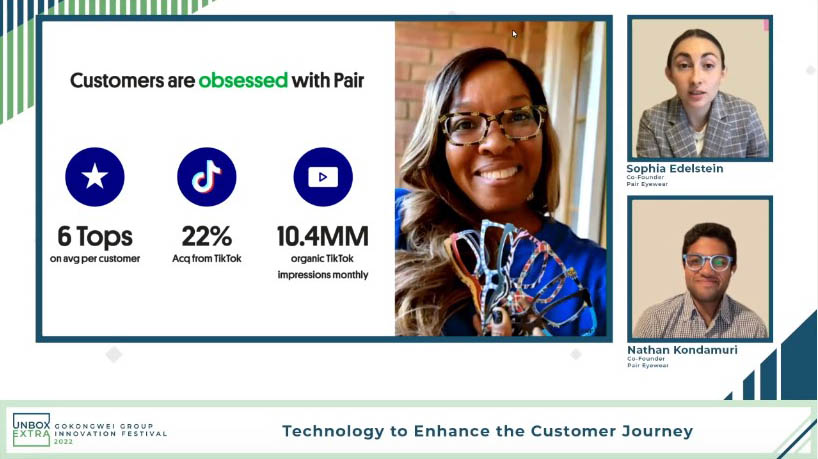
Carsome, Southeast Asia’s largest car e-commerce platform, aims to eliminate three common concerns in the used-car buying business: the lack of trust, choice, and transparency. Carsome addressed these issues not only by introducing a digital platform, but by integrating more offers to make the experience hassle-free. These are: a wide selection of cars that were fully inspected and certified, a one-year warranty, fixed car prices with no hidden costs, and a range of payment and financing schemes. Carsome also made it a point of maintaining the same service quality across all customer interactions, from its digital platforms, to retail centers, to car reconditioning, to financing and insurance, all to give the customer the best possible car buying experience.
Nel Laygo, the man behind the popular bookkeeping app Peddlr, looked back at his startup journey and underscored the value of getting a product to the market quickly, even if it hasn’t been perfected yet. By talking to the app’s intended users, micro and small business owners, he found out that their number one problem was inventory management. Today, Peddlr allows these business owners to track sales, inventory, accounting, and even provides insight reports all via the Peddlr mobile app. During his talk, he shared that a unique brag-worthy (UBP) proposition is greater than a unique selling proposition (USP). “Having the UBP makes every user a brand ambassador of the product,” says Laygo.
3. Focus on the Metrics that Matter.
At JG Summit, the invaluable feedback from internal customers helped Corporate Center Units (CCUs) provide value-adding services and improve their customer-centric culture. The Internal Customer Satisfaction (or iCSAT) survey aims to measure the level of satisfaction of internal customers - particularly our Strategic Business Units. Armed with the iCSAT results, identification of service delivery gaps and critical pain points allowed the CCUs to create more efficient processes, better service experiences, and ultimately, more satisfied internal (and external) customers. “We realized that, often, what seems unimportant to us but is quite easy to do, means a lot to our customers,” said JG Summit President and CEO Lance Gokongwei.
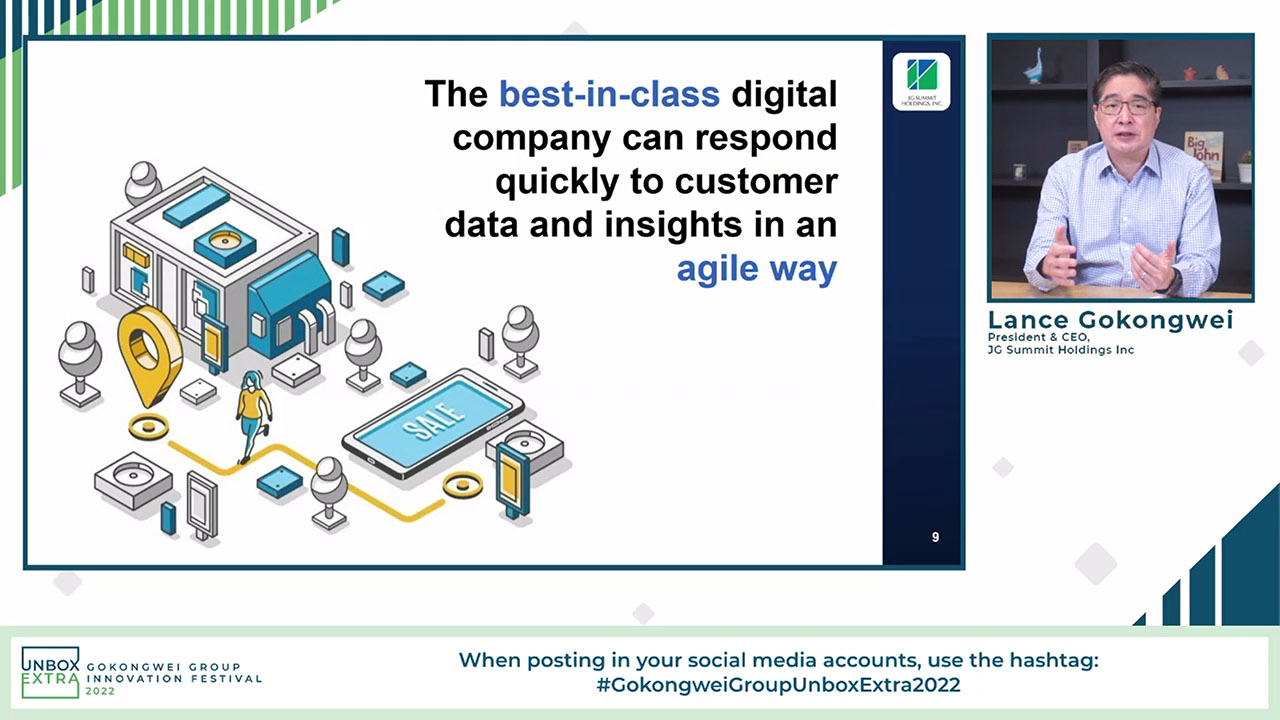
Metrics also helped GoCart, the online store of Robinsons Retail, with improving their overall services, delivery time, and app ratings. Pauline Marie Quianzon, GoCart’s Head of Customer Service, says that one of the issues that mattered most to their customers was getting the assurance that their concerns were being addressed. Taking care of this need, GoCart worked on improving customer service first-response times to a matter of minutes; case resolution also went down from 20 days to one day.
4. Do Rapid Prototyping.
According Gokongwei-Cheng, it’s important to get the customer to interact with low-fidelity products through prototyping and then iterate.
Getting products out to the market quickly was mentioned by Peddlr’s Laygo, but the practice is also encouraged at URC and the innovation think tank, IDEO.
Bea Camacho, Design Director at IDEO, shares that prototyping helps the product development process by testing one’s assumptions and learning to build a product that customers actually need. Prototyping can also be used to arrive at business decisions and strategy, as well as to demonstrate ideas and possible products of the future that current technology cannot yet create.
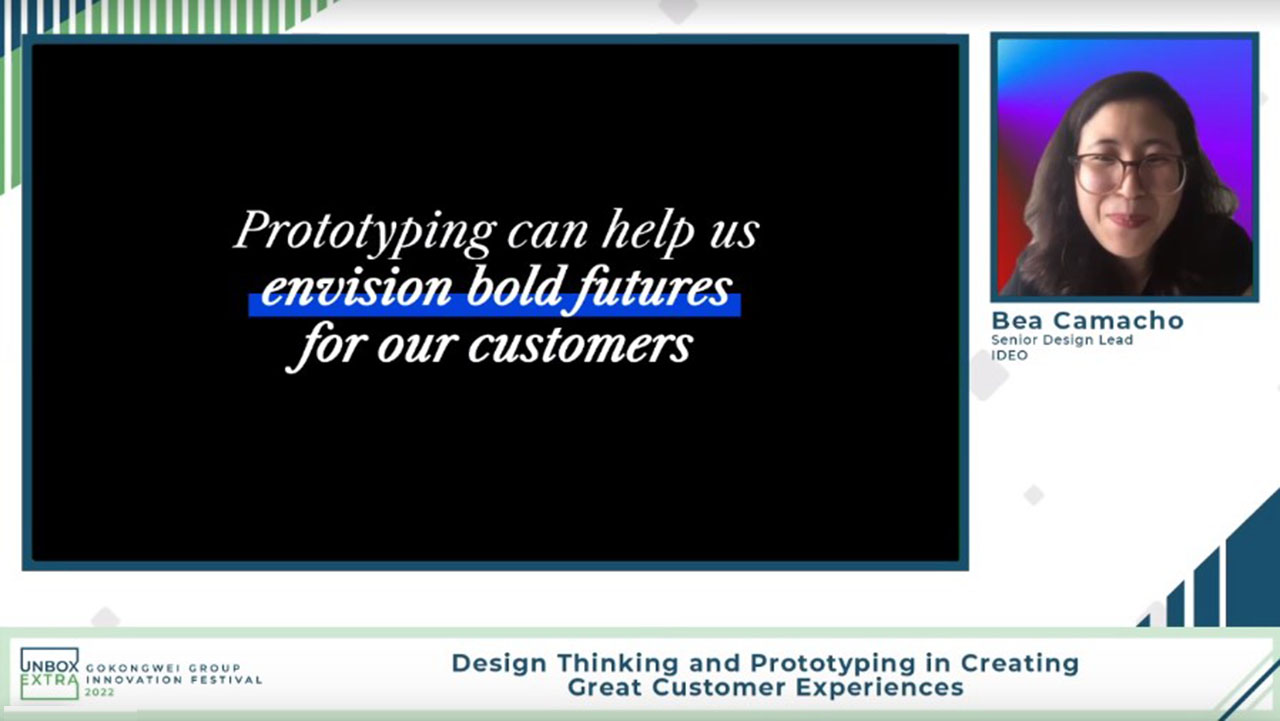
Prototyping also led to the development of URC’s new hit product Cloud 9 Gold. Mian David and Krishna Mohan Suri of URC talked about quickly bringing a product concept to their consumers and getting their insights, before they iterated and repeated the cycle. This effort resulted in the revival of a love for a timeless snack.
5. Customer Data Is the Center of Many Best-in-Class Companies.
At Unbox Extra, companies such as Pair Eyewear, Carsome, and Grab shared how data is vital to improving their customer journeys.
Grace Vera Cruz, Country Head of Grab Philippines, shared that while her team relies on quantitative data to better understand its consumers and partners, she emphasizes that insights come from processing the data, and the insights are more important than the data alone.
Pair Eyewear’s Edelstein describes how data is widely used across the Pair organization: The company’s design team also relies on data to learn which types of designs click with their customers.
In the same manner, Carsome maps each customer touchpoint, not just the final stage of a transaction, to be able to measure what needs to be improved. “We are not making decisions based on assumptions, we are making decisions based on data that we see,” said Carsome’s Cheng.
6. Balance Quantitative with Qualitative Information.
Similar to how Grab’s Vera Cruz views insights as more important than raw data, getting the balance right between quantitative and qualitative data is also desired. To do this properly, Gokongwei Cheng suggests, “Get out there and spend time with your customers in their environments.”
URC visited its customers at their schools and homes, interviewed them about their current preferences, and even observed what was in their pantries. This qualitative data was combined with quantitative data acquired from the company’s many years of food science expertise, to come up with the new Cloud 9 Gold, a prime example of customer-led innovation at URC.
7. COVID Has Made the Workforce Rethink their Work-Life Balance and Question Their Motivations.
The pandemic led to waves of employee resignations at companies all over the world. According to James Root of Bain & Company, employers must rethink the traditional ways of managing talents and keeping them motivated. This starts with understanding that there is no such thing as an average employee. Instead, employers must learn to distinguish the six worker archetypes: Operators, Givers, Artisans, Explorers, Strivers, and Pioneers. Discovering the archetypes that employees fall under could make a big difference in unleashing their potential.
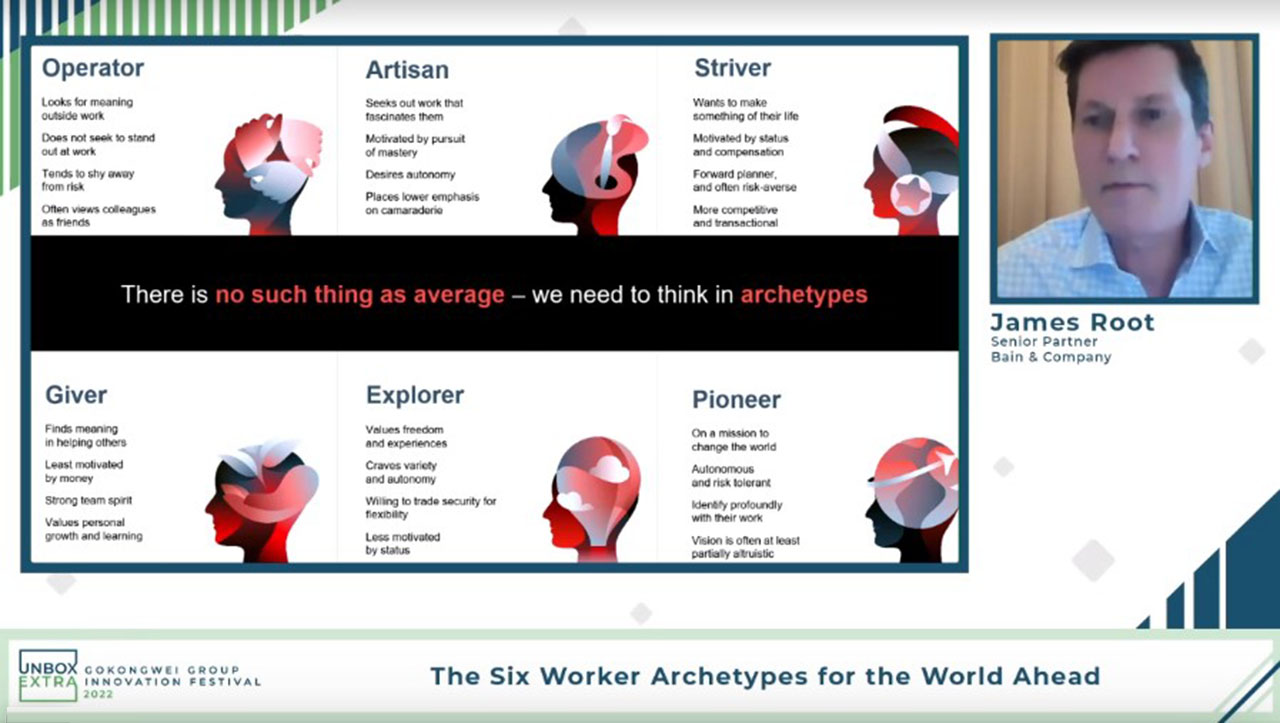
Differing worker motivations have also led to a difference in the approach to the future of work. Companies must listen to their internal customers, their employees, to find out which model suits them best.


